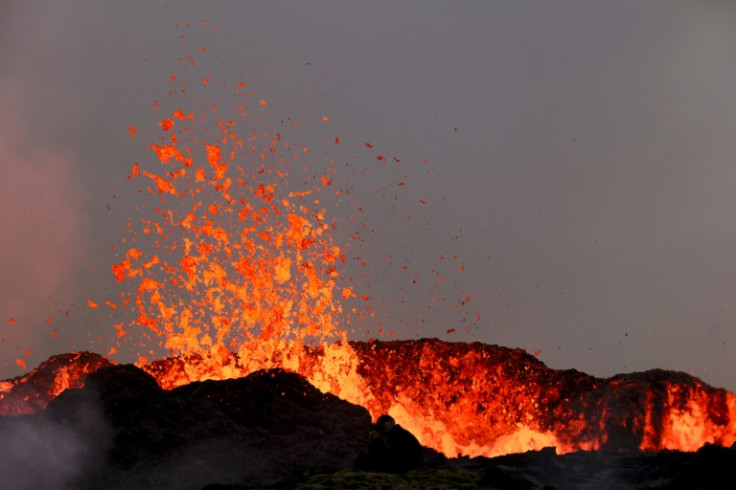Iceland Is Still Preparing For Volcanic Eruption After Authorities Declare High Threat
More than 3,000 residents have been evacuated from Grindavik as the construction of lava barriers at the Svartsengi Geothermal Power Plant continues.

Last week, on Saturday 11 November, the Icelandic authorities declared that the country was on a high threat alert for a volcano eruption.
The volcano, Eyjafjallajökull is located in Iceland's southwestern peninsula and is known for its explosive eruptions in the past.
So far, more than 3,000 residents in the small coastal town of Grindavik, have been ordered to evacuate the area as the government confirmed an imminent eruption of a volcano in the coming days.
Additional evacuations from Grindavík have been carried out this week, on Monday and Tuesday, with the authorities noting that is "for security reasons".
The news comes after a series of earthquakes rocked Iceland and evidence of magma was spotted spreading at a rapid pace underground.
Magma is a combination of both molten and semi-molten rock that rests beneath the surface of the Earth. Magma is known to cause eruptions when it finds its way to the surface, turning into lava.
A group of scientists, from the Icelandic Meteorological Office (IMO), who were monitoring the situation, said that "magma is moving closer to the surface".
The experts also noted that "the greatest area of magma upwelling" is an area just two miles (3.5 kilometres) from the northeast of Grindavík.
Icelandic police officers have also been monitoring the number of people entering Grindavík, which has been labelled "dangerous", and have been forced to block the road for cars returning to the coastal town to gather their personal belongings.
Police told residents of Grindavik who wish to obtain more belongings, that the "circumstances will be re-evaluated tomorrow".
Residents of Grindavik have been given limited time to gather more of their belongings from the town.
— Nopolluting (@nopolluting) November 14, 2023
📷Video from biornvalur via tiktok.#iceland #icelandvolcano #IcelandEarthquakes pic.twitter.com/fvrki7BYip
Pedrag, who fled the small coastal town with his wife last week, is a native Serb who has lived in Iceland for many years.
Speaking to reporters about the series of earthquakes that rocked Iceland, Pedrag said: "If you talk to Icelandic people who have lived there all their lives, they say they have never felt something like that."
Aslaug Yngvadottir Tulinius, who works for the Icelandic Red Cross, added: "This is one of the biggest evacuations we've ever had. It's a huge incident. It has a great effect on all Icelanders."
A spokesperson for Reykjanesbaer (Reykjanes) municipality, the largest municipality in Iceland that is home to around 30,000 people, said that in recent days, the local authorities have been building lava barriers around a geothermal power plant.
The Svartsengi Geothermal Power Plant, which has been measured at around six kilometres from Grindavík, is known for being a vital source that provides electricity and renewable water to heat homes in the entire Suðurnes region.
Last night, a little before midnight, Iceland's authorities approved a bill that allowed for the building of lava barriers and a series of protective trenches around the power plant.
The government noted that the construction will be financed through a future tax hike.
Icelandic homeowners will see an additional tax of 0.08 per cent of their properties' fire insurance valuation.
Although Iceland's parliament noted that the increase in tax will be implemented for three years, similar taxes imposed in the past, have become permanent at a later date.
A local news source, Visir, reported that the lava barriers are expected to be around six to eight metres high and will take 30 to 40 days to complete.
With reference to a 1973 eruption that began without warning and destroyed 400 homes, Iceland's Civil Protection Agency warned that the 360,000 residents "have not experienced before, at least not since the eruption in Vestmannaeyjar".
Michele Pauletto, a Research student at Imperial College London, said that a magma reaction to seawater could make the volcano more explosive if it were to erupt underwater.
Pauletto declared: "If it erupts undersea, it could cause a Surtseyan eruption similar to the one that happened in 1963, also in Iceland, and created the island of Surtsey. That particular eruption lasted several years, so this is a possibility."
© Copyright IBTimes 2025. All rights reserved.


















